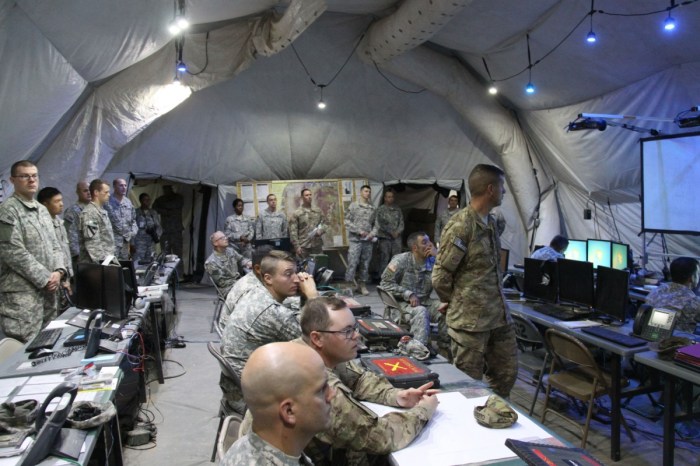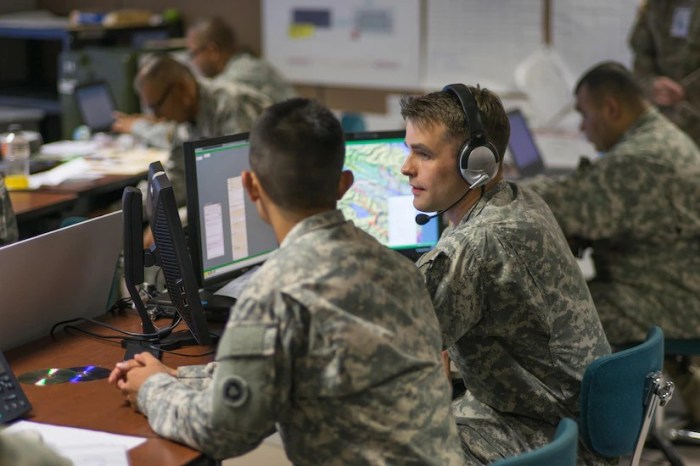What typically does not involve simulation-based wargaming? This question delves into the realm of wargaming methods that transcend the use of simulations, offering unique advantages and challenges. By exploring non-simulation-based approaches, we uncover a diverse range of wargaming techniques and their applications across various fields.
These non-simulation-based wargaming methods provide valuable insights into decision-making, strategy development, and conflict resolution, making them essential tools for military training, business planning, and policy analysis.
Types of Wargaming: What Typically Does Not Involve Simulation-based Wargaming

Wargaming encompasses a wide range of methodologies used to simulate and analyze military operations and strategic decision-making. These methodologies can be broadly categorized into two main types: simulation-based wargaming and non-simulation-based wargaming.
Simulation-based wargaming utilizes computer models and algorithms to simulate the actions and interactions of individual units, entities, or systems within a simulated environment. This type of wargaming allows for highly detailed and realistic simulations of complex scenarios, enabling analysts and decision-makers to explore a wide range of possibilities and outcomes.
Non-simulation-based wargaming, on the other hand, does not rely on computer simulations. Instead, it uses a variety of techniques, such as board games, role-playing exercises, and tabletop exercises, to represent the actions and interactions of participants.
Advantages of Non-Simulation-Based Wargaming
Non-simulation-based wargaming offers several advantages over simulation-based wargaming:
- Flexibility:Non-simulation-based wargaming is highly flexible and can be adapted to a wide range of scenarios and objectives. It allows for the incorporation of real-world factors and constraints that may be difficult to simulate accurately using computer models.
- Simplicity:Non-simulation-based wargaming is generally simpler and easier to understand than simulation-based wargaming. This makes it more accessible to a wider range of participants, including those with limited technical expertise.
- Immersion:Non-simulation-based wargaming can provide a more immersive and engaging experience for participants. By physically interacting with the game components, participants can develop a deeper understanding of the challenges and complexities of decision-making in real-world scenarios.
Disadvantages of Non-Simulation-Based Wargaming
Non-simulation-based wargaming also has some disadvantages:
- Scalability:Non-simulation-based wargaming can be difficult to scale up to large and complex scenarios. As the number of participants and the complexity of the scenario increase, it becomes more challenging to manage the game and ensure that all participants have a meaningful experience.
- Accuracy:Non-simulation-based wargaming may not be as accurate as simulation-based wargaming, especially when it comes to simulating complex interactions and dependencies between different units and systems.
- Repeatability:Non-simulation-based wargaming is often less repeatable than simulation-based wargaming. The results of a non-simulation-based wargame may vary significantly depending on the participants involved and the specific circumstances of the game.
Applications of Non-Simulation-Based Wargaming, What typically does not involve simulation-based wargaming
Non-simulation-based wargaming has a wide range of applications in various fields, including:
- Military training:Non-simulation-based wargaming is used to train military personnel in a variety of skills, such as decision-making, problem-solving, and teamwork.
- Crisis management:Non-simulation-based wargaming is used to prepare for and respond to potential crises, such as natural disasters, terrorist attacks, and pandemics.
- Business strategy:Non-simulation-based wargaming is used to develop and evaluate business strategies, such as market entry, product development, and risk management.
- Public policy:Non-simulation-based wargaming is used to analyze and evaluate public policies, such as healthcare reform, education reform, and environmental protection.
Challenges of Non-Simulation-Based Wargaming
Non-simulation-based wargaming faces several challenges:
- Subjectivity:Non-simulation-based wargaming can be subjective, as the results of the game may depend on the biases and assumptions of the participants.
- Validity:It can be difficult to assess the validity of non-simulation-based wargames, as there is no objective way to measure the accuracy of the results.
- Time and resources:Non-simulation-based wargaming can be time-consuming and resource-intensive, especially for large and complex scenarios.
Future Trends of Non-Simulation-Based Wargaming
Non-simulation-based wargaming is expected to continue to evolve in the future, with the following trends:
- Increased use of technology:Non-simulation-based wargaming is increasingly incorporating technology, such as virtual reality and augmented reality, to enhance the experience for participants.
- Focus on collaboration:Non-simulation-based wargaming is becoming more collaborative, with a focus on involving a wider range of stakeholders and perspectives.
- Development of new methods:New methods and techniques are being developed to improve the accuracy, validity, and scalability of non-simulation-based wargaming.
FAQ Summary
What are the primary advantages of non-simulation-based wargaming?
Non-simulation-based wargaming offers several advantages, including flexibility, adaptability, and cost-effectiveness. These methods allow for tailored scenarios, real-time decision-making, and the incorporation of human factors, providing a more realistic and immersive experience.
How is non-simulation-based wargaming used in business planning?
Non-simulation-based wargaming has found applications in business planning by enabling organizations to simulate competitive environments, test strategies, and assess risk. These methods help businesses identify potential challenges, develop contingency plans, and make informed decisions.
What are the limitations of non-simulation-based wargaming compared to simulation-based approaches?
Non-simulation-based wargaming has certain limitations, such as the potential for human bias, the inability to fully replicate real-world conditions, and the challenges in modeling complex systems. However, these limitations can be mitigated through careful design and facilitation.


